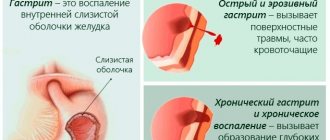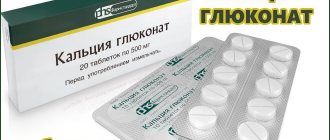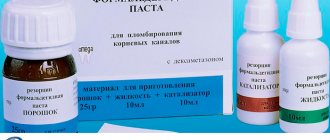Pharmacological action of Glycerophosphate
The drug contains calcium glycerophosphate, sodium glycerophosphate and sugar.
According to the instructions, Glycerophosphate is a drug that regulates the exchange of phosphorus and calcium and stimulates metabolic processes in the body. The drug has a tonic and restorative effect on the body.
Calcium ions take part in the transmission of nerve impulses, the process of contraction of striated and smooth muscles, the normal functioning of the myocardium and blood clotting. They are also necessary for the formation of bone tissue, maintaining electrolyte balance and the functioning of other systems of the human body.
Calcium in Glycerophosphate is absorbed in ionized form in the gastrointestinal tract, after which it is distributed in equal proportions throughout the tissues. It is eliminated from the body during natural bowel movements.
Instructions for Calcium Glycerophosphate (Method and dosage)
The instructions for use of this medicine indicate that it should be taken orally, 1 tablet three times a day. Take the medicine before meals.
The medicine in granules is prescribed in 0.5-1 teaspoon doses, depending on the doctor’s recommendations. You need to take the product 2-3 times a day.
Children should take 1 tablet, 1-3 times a day, depending on age and specialist prescription. Pregnant women take 1 tablet twice a day. In order for the active substance to be better absorbed by the body, it is recommended to take the medicine simultaneously with vitamins D
and
C.
_
Additional Information
Glycerophosphate must be stored in a dry, cool place out of the reach of children. Shelf life - no more than 5 years from the release date indicated on the drug packaging.
When using this medication, it should be borne in mind that the absorption of calcium glycerophosphate from the intestine can be reduced by foods such as bran, spinach, rhubarb and cereals.
The drug is not contraindicated for use by women during pregnancy and lactation. Only during breastfeeding should it be taken into account that calcium is excreted in milk, therefore, if the child has already been prescribed vitamin D3, the nursing mother should not take Glycerophosphate, otherwise the baby may develop hypercalcemia.
Analogs
There are no exact analogues of Calcium glycerophosphate. But in Russia there are analogs containing calcium that can replace the drug. These are Calcium gluconate, Calcid, Complivit calcium d 3.
Calcium gluconate
The product is produced in the form of a solution and tablets. 1 pill contains 500 mg of calcium gluconate, and 1 ml of solution contains 95.5 mg of the main substance.
The tablets are placed in blisters of 10 pieces. A cardboard box contains 1-3 packages of tablets.
The solution is contained in ampoules of 5-10 ml. One package contains 10 ampoules.
Manufacturers of the drug in Russia are Evalar, Grotex, Vial, PFK Update, Ellara. The cost of Calcium gluconate is from 34 rubles to 208 rubles.
Tablets or solution are used for hypocalcemia. The drug is also included in complex therapy for bleeding and allergies. The medicine is also used as an antidote for intoxication with oxalic acid and magnesium salt.
Contraindications:
- Thrombosis
- Renal dysfunction
- Hypersensitivity
- Childhood
- Osteoporosis
- Hypercalcemia.
Tablets are taken up to 3 times a day, 1-3 grams at a time.
The solution is used intramuscularly and intravenously. A single dose is 5-10 ml. The medicine is administered every day or every other day. The dose of solution for children is 1-5 ml, which is administered after 2-3 days.
Adverse reactions of the drug:
- Bradycardia
- Diarrhea
- Vomit
- Nausea.
If we compare Calcium gluconate and Calcium glycerophosphate, it becomes clear that the drugs differ in composition. In this case, the first product is available in the form of a solution and tablets, and the second - only in tablet form.
The drugs have relatively identical indications, contraindications and side symptoms. The tablets do not differ in dosage and method of administration.
If we talk about which remedy is better, doctors note that Calcium glycerophosphate differs in its action. The product activates metabolism and has a tonic and restorative effect. The drug has great biological activity due to its phosphorus content.
Calcide
The product is produced as tablets containing calcium, biotin, folic acid, vitamins (D3, C, B), pantothenic acid, niacin.
The tablets are placed in plastic packaging, 100 pieces each.
Manufacturer: Calcida – Comfort Complex, Russia. The price of the supplement is 133 rubles.
Calcide is a general strengthening drug that is a source of vitamins and calcium. Indications for use:
- Rickets
- Osteoporosis
- Infections
- Diseases of the heart and blood vessels
- Development of a child's body
- Lack of vitamins and calcium
- Colds
- Healing period of fractures and wounds
- Allergy
- Mental and physical stress
- Lactation and pregnancy.
Contraindications – intolerance to the components of the product.
Dosage – 1 tablet three times a day.
Side effects of the medication include dyspepsia (stool problems, flatulence) and allergies.
Comparing Calcide and Calcium glycerophosphate, doctors note that the drugs have one common component - calcium. Other basic components of the drugs differ. The first product contains vitamins, microelements and beneficial acids, and the second contains phosphorus.
Both drugs are available in tablet form. The main indication for the use of drugs is hypocalcemia. But Calcide is also prescribed as a general tonic for cardiovascular and immune diseases, fractures, and exhaustion of the body.
The remedies do not differ in the method of administration. The main contraindication to the use of biological additives is intolerance to their components. Calcide and Calcium glycerophosphate have identical side symptoms.
When answering the question of which is better, Calcide or Calcium glycerophosphate, the doctor points out that it all depends on the indications. So, the first drug should be chosen for general strengthening of the body, and the second - for rickets and hypocalcemia.
Indications for use
For children, as well as for adults, calcium glycerophosphate is prescribed for hypocalcemia, rickets, dystrophy, malnutrition, and a decrease in the overall resistance of the body due to nervous exhaustion or fatigue.
Applications of Calcium glycerophosphate
Children are prescribed calcium glycerophosphate at a dose of 50-200 mg, 2-3 times a day. It is believed that the drug can be used in children over two years of age. However, it often has to be given to children under one year of age who show signs of calcium deficiency in the body (anxiety, poor sleep). In such cases, the drug is first crushed and dissolved in a small amount of water. The duration of use of the drug is from 2 to 4 weeks. Usually, after two weeks, a pronounced positive effect is observed - children become calmer and sleep much better.
Side effects of Calcium glycerophosphate
The drug is generally well tolerated by children. In rare cases, constipation or diarrhea, mild nausea, may occur. Sometimes taking the drug can trigger the development of an allergic reaction.
special instructions
It is recommended to use the product in combination with iron supplements.
In patients simultaneously receiving diuretics or cardiac glycosides, as well as in cases of long-term therapy with the drug, it is recommended to monitor the concentration of creatinine and calcium in the blood. If there is an increase in these indicators, a reduction in the dose of Calcium glycerophosphate or its temporary discontinuation is required.
Since vitamin D3 increases the absorption of calcium from the gastrointestinal tract, it is recommended, in order to avoid an overdose of the drug, to take into account the intake of vitamin and calcium from other sources.
The following foods can reduce the absorption of calcium from the gastrointestinal tract - spinach, bran and rhubarb.
The drug does not affect the patient’s ability to carry out potentially hazardous types of work that require increased attention and speed of psychomotor reactions.
Interaction
When taken simultaneously with cardiac glycosides, it may enhance the toxic effect of the latter.
The drug can also increase the absorption of tetracyclines and reduce the absorption of bisphosphonates from the digestive system.
In turn, glucocorticosteroids reduce calcium absorption.
When used simultaneously with calcium glycerophosphate and drugs containing high doses of calcium, as well as thiazide diuretics, the likelihood of developing hypercalcemia increases.
pharmachologic effect
Calcium glycerophosphate -
a product that contains phosphorus, which affects metabolic processes in tissues. The medicine can be a source of calcium and phosphorus.
Under its influence, protein production is activated and the functioning of the nervous system is improved.
Stimulates the process of strengthening bone tissue, activates metabolism in the human body. Calcium ions are involved in the processes of muscle contraction, blood clotting, and the functioning of the myocardium.
Calcium glycerophosphate (Calcii glycerophosphas)
Description White, odorless, fine-crystalline powder with a slightly bitter taste.
Solubility . Soluble in diluted hydrochloric acid.
Storage. In a dry place.
Calcium lactate (Calcii lactas)
Description. White fine powder, odorless. It erodes in the air.
Solubility. Soluble in water (slowly), easily soluble in hot water, very slightly soluble in alcohol, ether and chloroform.
Storage. In a well-closed container.
Source of calcium ions; antiallergic agent.
Calcium chloride (Calcii chloridum)
Description. Colorless crystals, odorless, bitter-salty taste. The drug is very hygroscopic and dissolves in air.
Solubility. Very easily soluble in water, causing strong cooling of the solution, easily soluble in 95% alcohol.
Storage. In small, well-closed glass jars with stoppers, filled with paraffin, in a dry place.
Source of calcium ions; antiallergic agent
Calcium carbonate (Calcii carbonas)
Description White powder, odorless and tasteless.
Solubility . Insoluble in water, soluble in diluted hydrochloric and nitric acids with the release of carbon dioxide.
Storage. In a well-closed container.
Externally - powder, internally - for high acidity.
Camphor
Description. White crystalline pieces, or colorless crystalline powder, or pressed tiles with a crystalline structure, easily cut with a knife and sticking together into lumps. It has a strong characteristic odor and a spicy, bitter, then cooling taste.
Solubility. Slightly soluble in water, easily soluble in 95% alcohol, very easily soluble in ether and chloroform, petroleum ether, fatty and essential oils.
Storage. In well-closed dark glass jars.
Used if there are indications for treatment with iodine.
Ascorbic acid (Acidum ascorbinicum)Vitaminum C
Description. White crystalline powder, odorless, sour taste.
Solubility. Easily soluble in water, soluble in alcohol, practically insoluble in ether, benzene and chloroform.
Storage. In a well-closed container, protected from light and air.
Citric acid (Acidum citricum)
Description: White crystalline powder, odorless, sour taste.
Solubility: Soluble in water, alcohol.
Storage: In a well-closed container, protected from light.
Acetylsalicylic acid (Acidum acetylsalicylicum)










